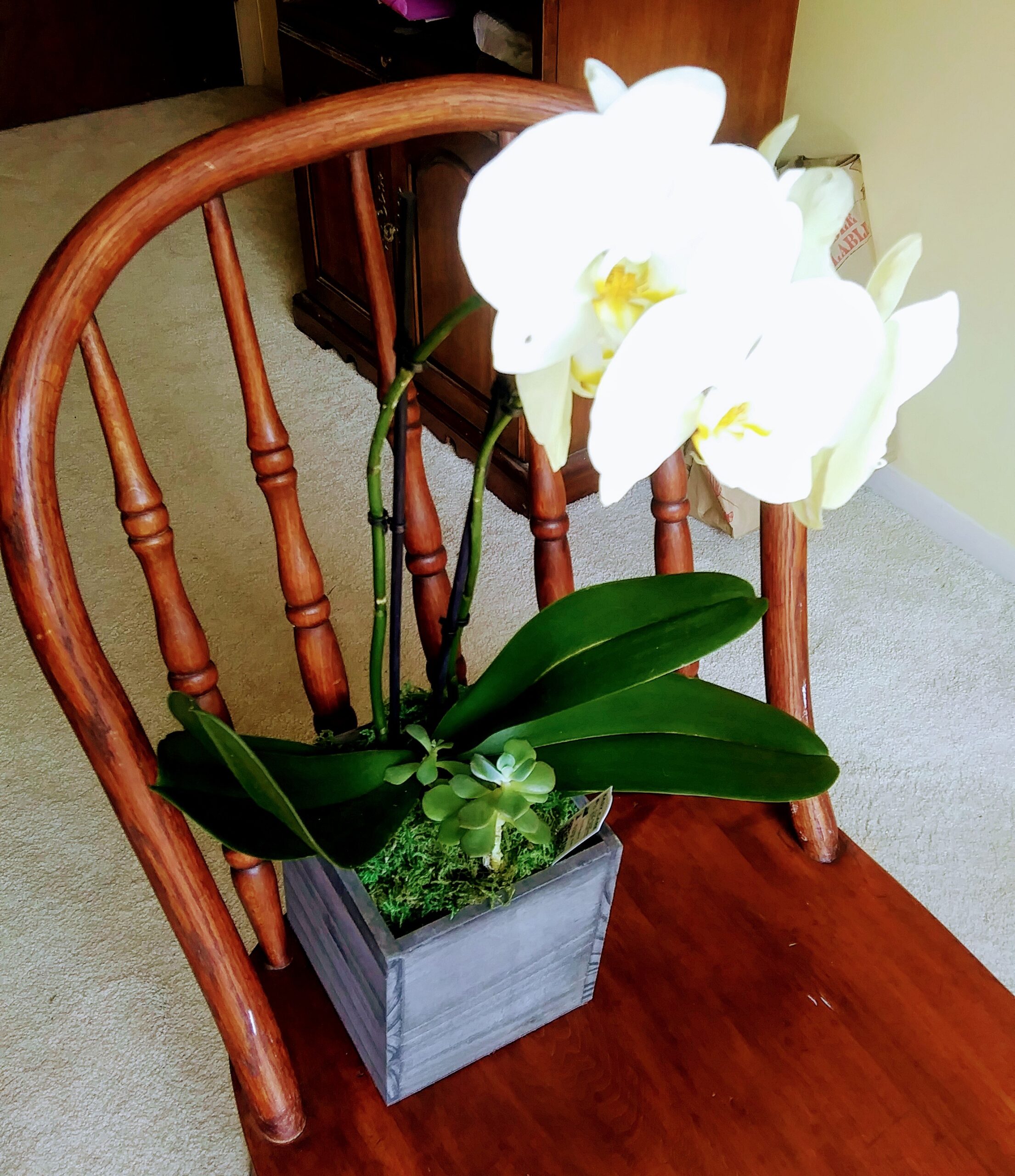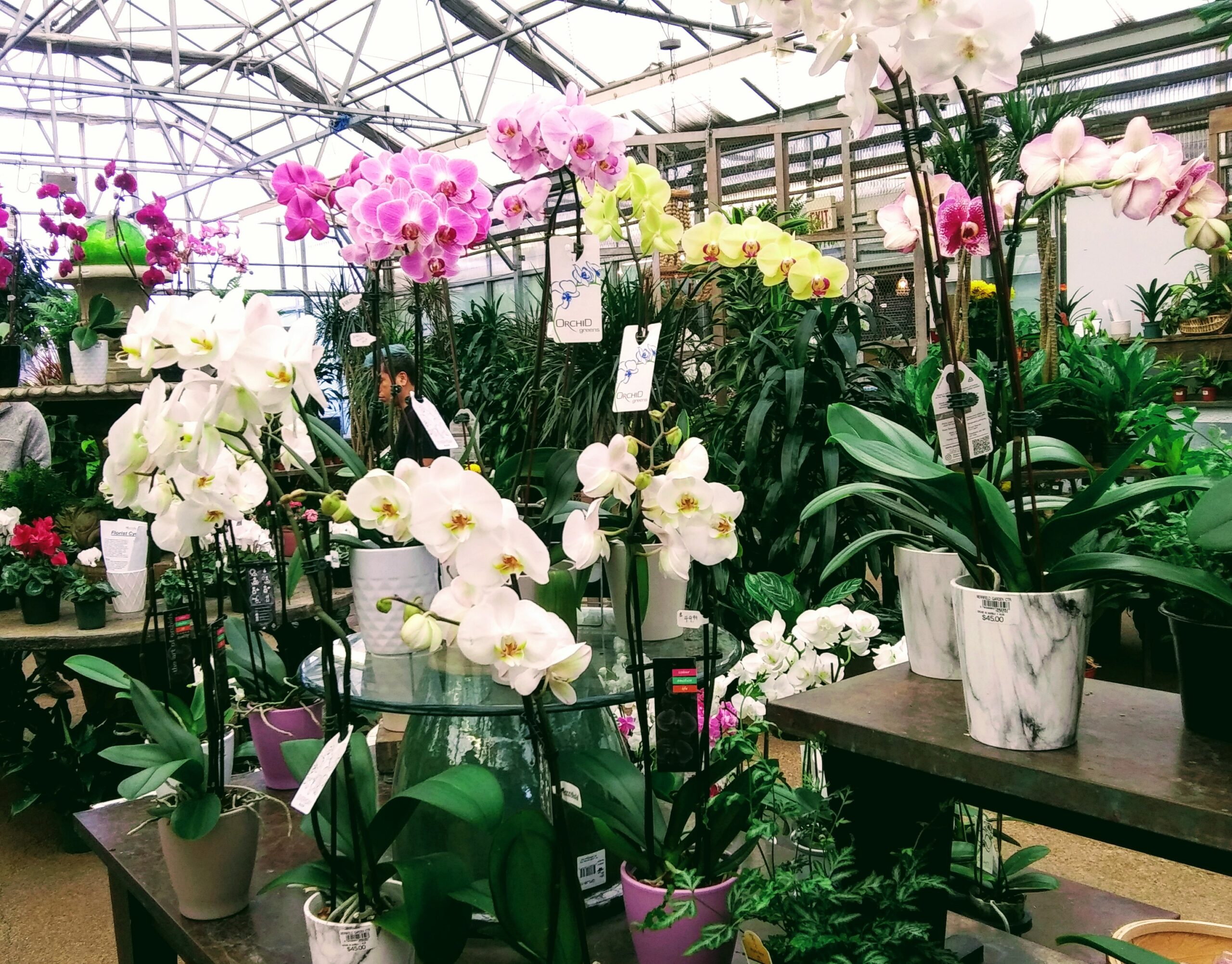I hate to admit this but I’ve killed my share of orchids. I am not even sure what type of orchids are in the photographs I posted on today’s blog. So that is why I signed up for Carol Allen’s online class on caring for moth orchids through Merrifield Gardens. The above photograph was also taken at Merrifield Gardens.
Apparently moth orchids or Phalaenopsis are the easiest orchids to grow. There are many varieties of orchids but moth orchids are generally white, pink, or pink striped.
All the information written on today’s blog was from that online class and some of the data I was quite surprised about.
Often orchids are an impulse purchase from the local grocery store. Orchids are bight dabs of color contained in small crocks.
Moth Orchid Growing Tips
- Light – Moth orchids need 1-3 hours of direct morning light. Too much light can burn the leaves of the plant. The plant only grows two new leaves per year.
- Watering – Plants need drainage holes so they do not sit in water. Green plastic pots with multiple holes on the bottom work best. Water plants only when dry and from the top. Water deeply with a kitchen sprayer for one full minute. If you water until water comes out the bottom, that is not enough water. The plant and leaves must be soaked. Be sure to wash the leaves off. This will also wash off any spider mites that might be on the plant. Leave plant in the sink after watering and drain for about 15 minutes. With a paper towel dry the crown of the moth orchid off. Never use ice cubes as part of your watering routine and do not water from the bottom.
- Humidity – Moth orchids do not need a pebble tray, misting or extra humidity in the air.
- Repotting – Roots are very important as is a good planting medium. Moth orchids should be repotted very every six months to a year. Use fir bark or New Zealand Sphagnums moss depending how much air the roots need. Repotting gets rid of any salt which has stuck to the growing medium. No need to get a larger crock unless indicated.
- Roots – When repotting, if you notice a root with rot on it, scrape off with your fingernail but do not cut it off. Roots should look fresh and not brown.
- Fertilizer – None needed. Fertilizers contains salt which will eventually burn the roots. You want slow growth with a moth orchid.
- Insecticides – None are generally needed. You can wash plant pests off with your watering or knock them off with your fingers.
After attending this orchid seminar, I want to rush out and buy a new moth orchid.
Orchids are one of the most beautiful plants in the world and have a magical exotic air about them. The long lasting blooms allow its perfect beauty to last a little longer.
 Orchid on Vintage Chair
Orchid on Vintage Chair


Soc.,
I am sorry that you did not care for our ruana fashion blog. I can only report on the history of an item BUT I can not change history no matter how much farmhouse magic I apply. Please keep reading our blog, enjoy great kismet, and have a nice day.
FARMHOUSE MAGIC BLOG.COM